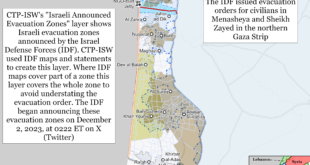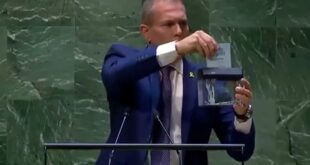Using Yanbu, as well as air bases at Tabuk and Taif along the Red Sea, would give the American military more options along a crucial waterway that has come under increased attack from Yemen’s Iranian-backed Houthi militias.
The US military is exploring the possibility of using a Red Sea port in Saudi Arabia and additional two airfields in the kingdom amid heightened tensions with Iran, the military said Tuesday.
While describing the work as “contingency” planning, the US military said it already has tested unloading and shipping cargo overland from Saudi Arabia’s port at Yanbu, a crucial terminal for oil pipelines in the kingdom.
Using Yanbu, as well as air bases at Tabuk and Taif along the Red Sea, would give the American military more options along a crucial waterway that has come under increased attack from suspected mine and drone boat attacks by Yemen’s Iranian-backed Houthi militias.
Challenges ahead
However, the announcement comes as Saudi-American relations remain uncertain over the intervention of a Saudi-led Arab coalition in Yemen in the first days of US President Joe Biden’s administration.
Deploying — even temporarily — American troops to bases in the kingdom, which is home to the holy city of Mecca, could reignite anger among extremists.
US Navy Capt. Bill Urban, a spokesman for Central Command, said the evaluation of the sites had been going on for over a year, sparked by the September 2019 drone-and-missile attack on the heart of the Saudi oil industry.
Saudi Arabia and the US have blamed that attack, which temporarily halved Saudi oil production and saw a spike in oil prices, on Iran. Tehran has denied being involved and the Houthis claimed the assault, though the drones involved appear to be Iranian-made.
“These are prudent military planning measures that allow for temporary or conditional access of facilities in the event of a contingency, and are not provocative in any way, nor are they an expansion of the US footprint in the region, in general, or in the kingdom of Saudi Arabia, in particular,” Urban wrote.
US Marine Gen. Frank McKenzie, the head of US Central Command, visited Yanbu on Monday. Defense One and the Wall Street Journal, which travelled with McKenzie to Yanbu, first reported on the American planning. Saudi officials did not respond to request for comment Tuesday.
Already, Saudi Arabia paid for improvements at the sites and are considering more, Urban said. Tabuk is home to King Faisal Air Base, while Taif is home to King Fahd Air Base.
Heavy US footprint
The Gulf Arab states are home to a vast array of American military bases, the legacy of the 1991 Gulf War that saw US-allied forces expel Iraq from Kuwait, and the later 2001 invasion of Afghanistan and 2003 invasion of Iraq. America pulled its forces out of Saudi Arabia after the 9/11 attacks.
Osama bin Laden had cited their deployment in his attacks targeting the US.
Already, US Central Command has a forward headquarters in Qatar. The US Navy’s 5th Fleet operates from the island kingdom of Bahrain off Saudi Arabia’s coast. Kuwait hosts the US Army Central’s forward headquarters, while the United Arab Emirates hosts American aviators and sailors.
Those locations also don’t include the American troop presence in Afghanistan, Iraq and Syria.
Former US President Donald Trump also deployed the first troops into Saudi Arabia since 9/11 over concerns about Iran. Some 2,500 American troops now man fighter jets and Patriot missile batteries at Prince Sultan Air Base south-east of Riyadh.
New logistics system
The addition of these Saudi locations appears to be part of what McKenzie previously described to the US Congress as the “Western Sustainment Network,” a new logistics system designed to avoid maritime chokepoints, said Becca Wasser, a fellow at the Washington-based Center for a New American Security.
These locations likely would not have permanently stationed troops and could allow the US to drawdown forces at other bases through that flexibility, she said.
“If we are trying to have a flexible posture where we are not tied to permanent bases… you are going to need to back it up with a logistics network that can make sure you can flow in people and weaponry as needed,” Wasser said.
Such contingency plans already exist in the Mideast, like the agreements that grant American forces rights to use bases in Oman under certain circumstances. But the western coast of Saudi Arabia also provides additional distance from Iran, which has invested heavily in ballistic missiles as sanctions have locked it out of global arms sales.
The Arabian Gulf “would be contested waters under any scenario of armed conflict with Iran, so you look at the places where you would move your forces as they enter the theater from being in a contested area,” McKenzie was quoted as telling journalists in Yanbu.
Iran’s increasing wariness
For Iran, additional bases likely will increase the pressure on its theocratic government and may obstruct its expansionist ambitions.
The US plans send signals to Tehran, that the US under Biden will not decrease its vigilance when it comes to Iran’s aggressive designs.
Tensions between Iran and the US remain high after Trump unilaterally withdrew from Tehran’s nuclear deal with world powers in 2018, leading to an escalating series of confrontations.
Alireza Miryousefi, a spokesman for Iran’s mission to the United Nations, criticised the US move, calling the presence of foreign troops in the Mideast “one of the main reasons for the chaotic situation and insecurity in our region.”
“Any ‘contingency for conflict’ with Iran would only make sense if another country intended to attack Iran and we are determined to defend ourselves if attacked,” Miryousefi said.
US relationship with Riyadh
It remains unclear how Biden’s relationship with Saudi Arabia will be during his presidency. While campaigning, Biden expressed his concerns over Riyadh’s intervention in Yemen.
However, Saudi Arabia and other Gulf Arab states remain top clients for American weaponry and rely on the US for ensuring the free flow of oil and goods through the Strait of Hormuz, the narrow mouth of the Arabian Gulf.
Riyadh also came under a mysterious air attack on Saturday which the US State Department under Biden condemned as “an attempt to target civilians.” It remains unclear if it was a missile or a drone used in the attack.
Most suspicion centred on the Iran backed Houthis.
The Houthi militias, who have previusly targeted Riyadh, denied being involved, especially as their terrorist listing is under review by Washington, though Arab Gulf countries blamed the assault on the rebels.
A previously unheard-of group called the “Righteous Promise Brigade” said it carried out the attack with “drones of terror,” without offering evidence to support its claim. Tehran described the group as “Iraqi.”
 Eurasia Press & News
Eurasia Press & News



